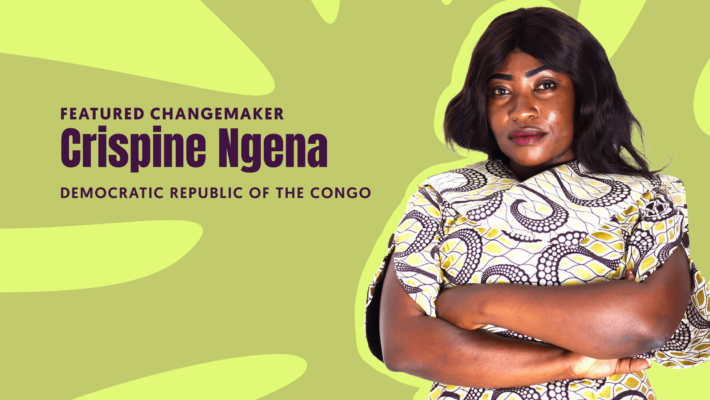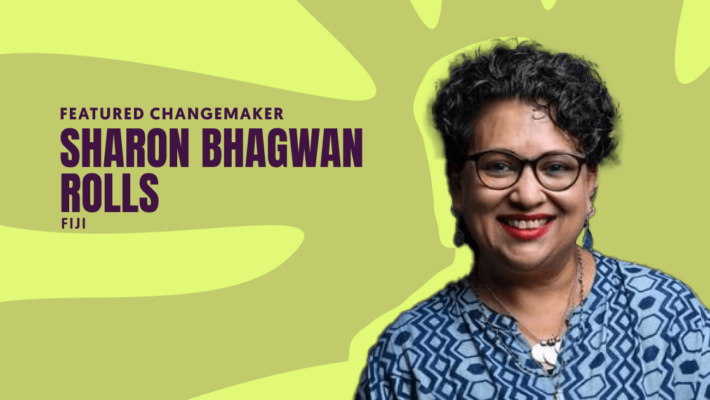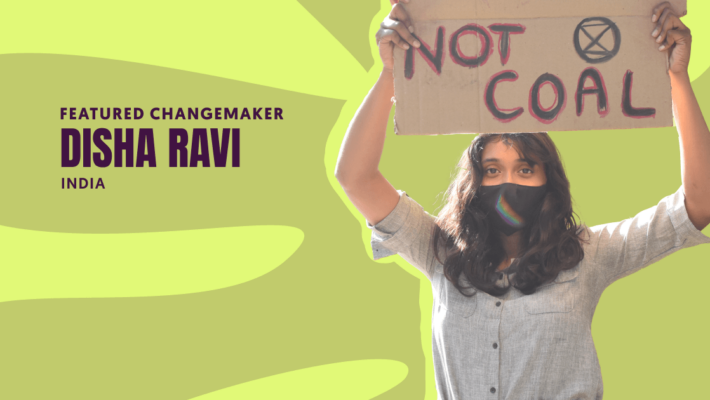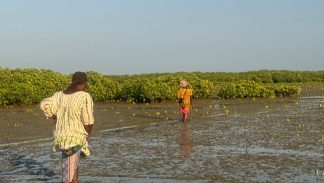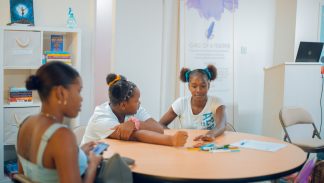Gender Justice Issues
Climate Justice
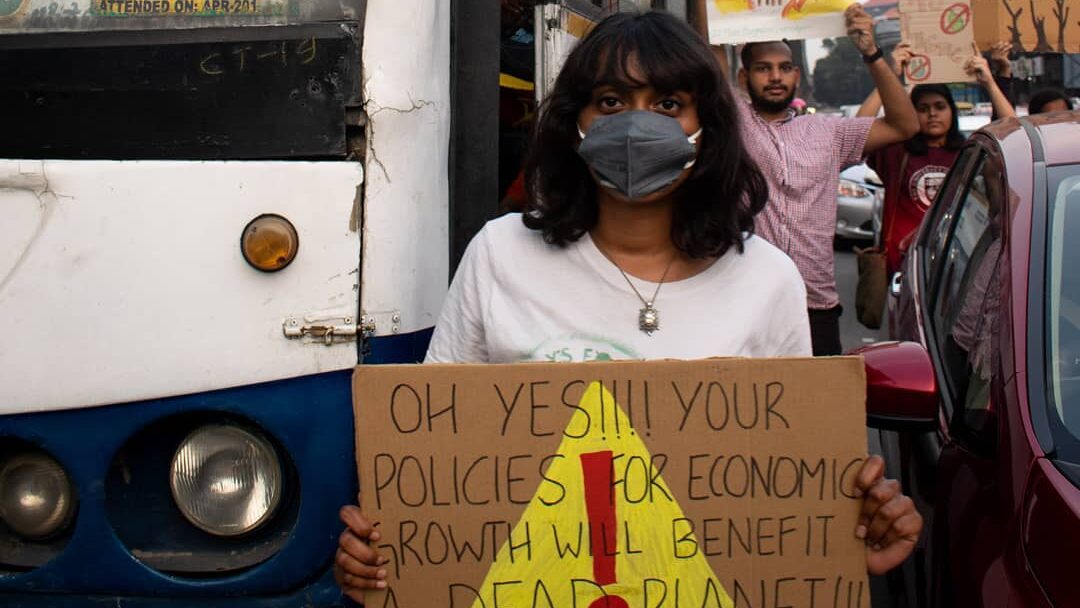
What is Climate Justice?
Climate change, pollution, and extractive industries are all crises that demand immediate, inclusive action to preserve the future of this planet. The climate crisis deepens structural inequalities, amplifies conflicts around the world, and forces people into increasingly vulnerable situations.
Despite mounting urgency, current strategies and investments are insufficient for the challenges ahead. Efforts to mitigate climate change receive less than 2% of global philanthropic giving. The climate crisis disproportionately affects women, girls, and marginalized communities. However, funding for the intersection of gender and the environment makeup only a tiny fraction of philanthropic dollars distributed—less than 0.2%. This funding has largely been top-down with a heavy focus on scale, missing locally-led solutions, and failing to center the voices of those most affected.
Global Fund for Women believes in a different approach—one rooted in climate justice.
Climate justice acknowledges the need for equitable, intersectional stewardship of the world’s resources and demands that we center the impact on—and solutions from—the people and communities who are most vulnerable and least responsible, such as rural and Indigenous communities, LGBTQI+ individuals, and communities living in poverty. We are working to help support climate solutions driven by self-led groups working to address climate change and social justice in their communities. Global Fund for Women’s vision for climate justice is that women, girls, trans, and gender nonconforming people have the power and resources they need to lead resistance to capitalist and unjust systems that harm the environment and advance solutions that reimagine how we can take what we need from the earth in a way that restores and sustains balance.

How Our Partners Are Supporting Climate Justice
One grantee formed in Guatemala in 2012 in response to the refusal and lack of transparency from the state about the development of a mining project that would impact local communities. Today, it is a community climate justice movement to defend life, territory, and water. They also work to protect rural and indigenous women activists and communities who are resisting violence and land grabs by State and multi-national companies. They do this through supporting healing and self-care as well as strengthening inter-generational women’s leadership within the movement and providing legal support to those taking a legal route to resistance.
In the Democratic Republic of Congo, another grantee works with women, young girls and indigenous communities to build egalitarian communities for a better future, challenge existing harmful cultural norms and practices and replacing them with new ones for change.
In India, a Global Fund for Women-grantee approaches the intersection of gender and climate justice through strategies to raise awareness and capacities around sustainable natural resource management, especially through organic farming, and they prioritize women’s access to and ownership over land as a human right and to sustain advances in climate-smart practices that women are leading.
Related Articles
How Does Climate Justice Affect Women and Historically Marginalized Communities?
From heatwaves to heavy precipitation, droughts, and tropical cyclones, we see weather and climate extremes increasing in every region across the globe. Research also shows that the threats of our changing climate are not distributed equally. Low-income communities are in an especially precarious position, and women, making up two thirds of the world’s poor, continue to be disproportionately affected by climate change.
There are numerous examples of the gendered effects of climate change: when droughts lead to crop failure, women experience increased agricultural work and an intensified food production burden. When deforestation pushes firewood sources further from home, women must walk longer while carrying more. When natural disasters strike, women are more likely to die—in some countries, twice as likely. If they survive, displacement brings heightened risks of sexual violence and other human rights violations. Those living at the intersection of multiple forms of discrimination, such as LGBTQI+ individuals; Black women; people living with disabilities; young people; rural community members; and many more historically marginalized groups are too often passed over in planning for climate disaster and in mitigation and recovery efforts.
Given the ominous future projected for those already affected by climate change, it is not surprising that women are portrayed as victims in policy spaces and the media. However, this undermines the participation of women and all historically marginalized communities in climate solutions as activists, leaders, and agents of change. Despite systemic barriers, women are at the forefront of community action to defend land, water, and air from those who profit from exploitative and capitalist relationships with the environment.
As Tamara Toles O’Laughlin, former director of the North American region of 350.org and advocate for a Black climate agenda, says, “conversations around strategy are too often had without us. And then that absence shows up in politics. It shows up in the policy. And it shows up as a failing—which leads us to have lost all this time in the climate crisis.” Racial justice must be at the center of climate policy discussions to create a future that we can all thrive in, and pass along to future generations.
Climate Justice Movements Around the World
Patriarchal and discriminatory norms have placed a higher burden on women and girls as caretakers and providers. In many cases, it is these dual roles that have also made women powerful caretakers of land, seeds, rivers, and coasts. For Indigenous women, centuries of sustainable land management and food production has instilled important knowledge on how humans can live harmoniously with nature while taking from it what is needed for survival. Women living in rural areas and working as small holder farmers are closest to the natural resources that are being impacted and are already implementing adaptation strategies that capture water better in dry seasons, restore soil fertility, minimize the need for firewood, and shift to seeds and crop types that are more climate resilient.
Women and women’s groups are well-placed to lead solutions and are often important first responders in emergencies, including natural disasters, and, as we have seen recently, in pandemics. But historically, feminist movements for climate justice have been severely under-resourced.
Despite this, grassroots intergenerational and intersectional gender justice movements in Fiji and the Caribbean are already organizing to demand climate justice and creating innovative, intersectional solutions the rest of the world can learn from.
